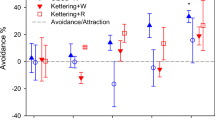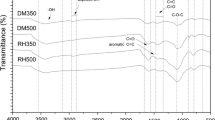Abstract
Biochar (char-product), generated by pyrolyzing organic materials, is produced for the intended use of land application to promote carbon sequestration, soil improvement and crop-yield. Despite the benefits biochar applications offers, scientific probing on impacts that may result from amendments with biochar is still fragmented. In this study, impact of biochar on Eudrilus eugeniae DNA was investigated. Rice-husk biochar was applied to soil at rates up to 80% d/w and earthworms were exposed for 35-day. Impact on DNA was measured using electrophoresis-gel-extraction-method. Data obtained showed that biochar application over 25% resulted in decreased survival. Electrophoresis-gel-analysis showed that DNA decreased from 450 to 300 bp in biochar soils (p = 0.002). Biochar rates (5%–25%) induced DNA damage. The DNA showed smeared bands or tail; indicating DNA degradation and/or damage. DNA damage is a clear evidence of negative impact of biochar(s) to soil-biota; suggesting that loading of soil with biochar could have serious consequences on soil-fauna.



Similar content being viewed by others
References
Abdul RNF, Abdul RNS (2017) The effect of biochar application on nutrient availability of soil planted with MR219. J Microbial Biochem Technol 9:583–586
Anyanwu IN, Semple KT (2016) Effects of phenanthrene and its nitrogen-containing analogues aged in soil on earthworm Eisenia fetida. Appl Soil Ecol 105:151–159
Anyanwu IN, Alo MN, Onyekwere AM, Cross JD, Nworie O, Uwa CU, Md Faruque H (2018d) Data on heavy metals content and biochar toxicity in a pristine tropical agricultural soil. Data Brief. https://doi.org/10.1016/j.dib.2018.03.123
Anyanwu IN, Alo MN, Onyekwere AM, Nworie O, Crosse JD, Chamber EB (2018b) Influence of biochar aged in acidic soil on ecosystem engineers and two tropical agricultural plants. Ecotox Environ Saf 153:116–126
Brtnicky M, Dokulilova T, Holatko J, Pecina V, KintI A, LataI O, Vyhnanek T, Prichystalova J, Datta R (2019) Long-term effects of biochar-based organic amendments on soil microbial parameters. Agronomy 9:747. doi:https://doi.org/10.3390/agronomy9110747
Buss W, Mašek O, Graham M, Wüst D (2015) Inherent organic compounds in biochar–their content, composition and potential toxic effects. J Environ Manag 156:150–157. https://doi.org/10.1016/j.jenvman.2015.03.035
Castan S, Sigmund G, Hüffer T, Hofmann T (2019) Biochar particle aggregation in soil pore water: the influence of ionic strength and interactions with pyrene. Environ Sci Process Impacts 21:1722. https://doi.org/10.1039/c9em00277d
Cui X, Wang H, Lou L, Chen Y, Yu Y, Shi J, Xu L, Khan MI (2009) Sorption and genotoxicity of sediment-associated pentachlorophenol and pyrene influenced by crop residue ash. J Soils Sedim 9:604–612
Domene X (2016) A critical analysis of meso- and macrofauna effects following biochar supplementation. Biochar Appl. https://doi.org/10.1016/B978-0-12-803433-0.00011-4
Domene X, Hanley K, Enders A, Lehmann J (2015) Short-term mesofauna responses to soil additions of corn stover biochar and the role of microbial biomass. Appl Soil Ecol 89:10–17
Elliston T, Oliver IW (2019) Ecotoxicological assessments of biochar additions to soil employing earthworm species Eisenia fetida and Lumbricus terrestris. Environ Sci Pollut Res. https://doi.org/10.1007/s11356-019-04542-2
Feng Y, Yang X, Singh BP, Mandal S, Guo J, Che L, Wang H (2019) Effects of contrasting biochars on the leaching of inorganic nitrogen from soil. J Soils Sedim. https://doi.org/10.1007/s11368-019-02369-5
Friedberg EC, Walker GC, Siede W, Wood RD (2005) DNA repair and mutagenesis. American Society for Microbiology Press, Washington, DC
Gomez-Eyles JL, Sizmur T, Collins CD, Hodson ME (2011) Effects of biochar and the earthworm Eisenia fetida on the bioavailability of polycyclic aromatic hydrocarbons and potentially toxic elements. Environ Pollut 159:616–622
Gorovtsov AV, Minkina TM, Mandzhieva SS, Perelomov LV, Soja G, Zamulina IV, Rajput VD, Sushkova SN, Mohan D, Yao J (2019) The mechanisms of biochar interactions with microorganisms in soil. EnvironGeochem Health. https://doi.org/10.1007/s10653-019-00412-5
Gruss I, Twardowski JP, Latawiec A, Medyńska-Juraszek A, Królczyk J (2019) The effect of biochar used as soil amendment on morphological diversity of Collembola. Sustainability 11:5126. https://doi.org/10.3390/su11185126
Hu CW, Li M, Cui YB, Li DS, Chen J (2010) Toxicological effects of TiO2 and ZnO nanoparticles in soil on earthworm Eisenia fetida. Soil Biol Biochem 42:586–591. https://doi.org/10.1016/j.soilbio.2009.12.007
Kaur V, Sharm P (2019) Effect of Prosopis juliflora biochar on physico-chemical properties of naphthalene and phenanthrene contaminated soil. Polycycl Aromat Compd. https://doi.org/10.1080/10406638.2019.1678185
Kim WI, Kunhikrishnan A, Go WR, Jeong SH, Kim GJ, Lee S, Yoo JH, Cho N, Lee JH (2014) Influence of various biochars on the survival, growth and oxidative DNA damage in the earthworm Eisenia fetida. Korean J Environ Agric 33:231–238
Lehmann J, Joseph S (2009) Biochar for environmental management: science and technology. Earthscan, London
Li D, Hockaday WC, Masiello CA, Alvarez PJ (2011) Earthworm avoidance of biochar can be mitigated by wetting. Soil Biol Biochem 43:1732–1737
Li X, Song Y, Yao S, Bian Y, Gu C, Yang X, Wang F, Jiang X (2019) Can biochar and oxalic acid alleviate the toxicity stress caused by polycyclic aromatic hydrocarbons in soil microbial communities? Sci Total Environ 695:133879. https://doi.org/10.1016/j.scitotenv
Liu X, Zhou J, Chi Z, Zheng J, Li L, Zhang X, Zheng J, Cheng K, Bian R, Pan G (2019) Biochar provided limited benefits for rice yield and greenhouse gas mitigation six years following an amendment in a fertile rice paddy. Catena 179:20–28. https://doi.org/10.1016/j.catena.2019.03.033
Lyu H, He Y, Tang J, Hecker M, Liu Q, Jones PD, Codling G, Giesy JP (2016) Effect of pyrolysis temperature on potential toxicity of biochar if applied to the environment. Environ Pollut 218:1–7. https://doi.org/10.1016/j.envpol.2016.08.014
Malev O, Contin M, Licen S, Barbieri P, De Nobili M (2016) Bioaccumulation of polycyclic aromatic hydrocarbons and survival of earthworms (Eisenia andrei) exposed to biochar amended soils. Environ Sci Pollut Res 23:3491–3502
Martins M, Costa PM (2015) The comet assay in environmental risk assessment of marine pollutants: applications, assets and handicaps of surveying genotoxicity in non-model organisms. Mutagenesis 30:89–106
Milla OV, Rivera EB, Huang W-J, Chien CC, Wang Y-M (2013) Agronomic properties and characterization of rice husk and wood biochars and their effect on the growth of water spinach in a field test. J Soil Sci Plant Nutri 13:251–266
Muhamad K (2016) The impact of biochar on soil functioning in two contrasting climates. Thesis submitted in partial fulfilment of the requirements for the Degree of Doctor of Philosophy, Lancaster Environment Centre, Lancaster University, UK
OECD (1984) Test no 207: earthworm, acute toxicity tests. OECD guideline for testing of chemicals. OECD Publishing, Paris
OECD (2016) Test no. 222: earthworm reproduction test (Eisenia fetida/Eisenia andrei), OECD guidelines for the testing of chemicals. OECD guidelines for the testing of chemicals. OECD Publishing, Paris. https://doi.org/10.1787/9789264264496-en
Song P, Gao J, Li X, Zhang C, Zhu L, Wang J, Wang J (2019) Phthalate induced oxidative stress and DNA damage in earthworms (Eisenia fetida). Environ Int 129:10–17. https://doi.org/10.1016/j.envint.2019.04.074
Tsouloufa A, Dailianis S, Karapanagioti HK, Manariotis ID (2020) Physicochemical and toxicological assay of leachate from malt spent rootlets biochar. Bull Environ Contam Toxicol 104:634–641. https://doi.org/10.1007/s00128-020-02839-4
Verhoef H (2004) Soil biota and activity. In: Doelman P, Eijsackers H (eds) Vital soil: function value and properties. Developments in soil science. Elsevier, Amsterdam
Yang X, Ng W, EeWong BS, HunBaeg G, HwaWang C, SikOk Y (2019) Characterization and ecotoxicological investigation of biochar produced via slow pyrolysis: effect of feedstock composition and pyrolysis conditions. J Hazard Mater 365:178–185. https://doi.org/10.1016/j.jhazmat.2018.10.047
Yang X, Wan Y, Zheng Y, He F, Yu Z, Huang J, Wang H, Ok YS, Jiang Y, Gao B (2019b) Surface functional groups of carbon-based adsorbents and their roles in the removal of heavy metals from aqueous solutions: a critical review. Chem Eng J 366:608–621
Yeboah ML, Li X, Zhou S (2020) Facile fabrication of biochar from palm kernel shell waste and its novel application to magnesium-based materials for hydrogen storage. Materials 13:625. https://doi.org/10.3390/ma13030625
Zhang Q, Saleem M, Wang C (2019) Effects of biochar on the earthworm (Eisenia foetida) in soil contaminated with and/or without pesticide mesotrione. Sci Total Environ 671:52–58. https://doi.org/10.1016/j.scitotenv
Acknowledgements
The authors thank Mr. Emeka Ogbonnia Oko, Mr. Monday Nwanchor, Mrs. Chime Isdore-Nwachukwu, Mrs. Anthonia Ozor and Mrs. Veronica Nwode for their help in sample collections and preparations.
Author information
Authors and Affiliations
Corresponding author
Additional information
Publisher's Note
Springer Nature remains neutral with regard to jurisdictional claims in published maps and institutional affiliations.
Electronic supplementary material
Below is the link to the electronic supplementary material.
Rights and permissions
About this article
Cite this article
Anyanwu, I.N., Onwukwe, D.J. & Anorue, C.O. In Vivo Genotoxicity of Rice Husk Biochar on Eudrilus eugeniae in Soil. Bull Environ Contam Toxicol 105, 650–655 (2020). https://doi.org/10.1007/s00128-020-02980-0
Received:
Accepted:
Published:
Issue Date:
DOI: https://doi.org/10.1007/s00128-020-02980-0




